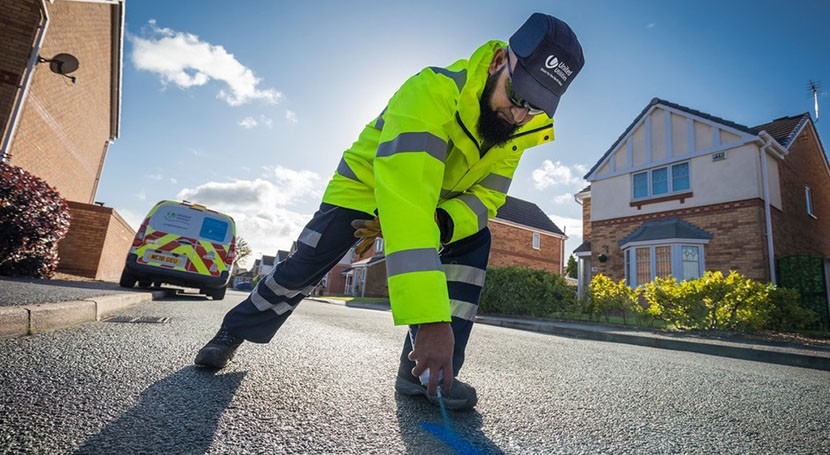Discover Reliable Water Leak Detection Providers for Accurate and Rapid Outcomes
Discover Reliable Water Leak Detection Providers for Accurate and Rapid Outcomes
Blog Article
Cutting-edge Solutions for Early Discovery of Water Leaks in Structures and Facilities
As the honesty of buildings and framework is vital, the challenge of early detection of water leaks has stimulated innovative services that assure to reinvent the means we protect versus potential damages. From sophisticated leak detection modern technologies to the deployment of IoT sensing units for real-time surveillance, the landscape of leak prevention is advancing rapidly. Maker knowing formulas use a peek right into the future of leak prediction, while thermal imaging provides a non-intrusive approach for determining surprise leaks. Automated water flow analysis systems are reshaping exactly how leakages are recognized and addressed, paving the method for an aggressive approach to water leakage discovery. Each of these services holds the essential to making sure the integrity and long life of our built environment, prompting a shift towards a much more lasting and effective future.
Advanced Leakage Discovery Technologies
Advanced leak discovery modern technologies, outfitted with sophisticated sensing units and algorithms, play a vital function in quickly identifying and pinpointing water leakages in numerous settings. These technologies employ a combination of acoustic, thermal, and electro-magnetic picking up techniques to discover leaks properly. Acoustic sensing units discover the sound of escaping water, enabling specific localization of the leak source. Thermal imaging identifies temperature level modifications triggered by water leakage, giving one more effective approach for leak identification. Electro-magnetic sensors can recognize modifications in magnetic fields brought on by water, providing yet an additional layer of leak discovery ability.

IoT Sensors for Real-Time Surveillance
In the realm of modern water leak detection, the assimilation of IoT sensing units for real-time surveillance represents a critical improvement in improving aggressive leakage discovery abilities. These sensing units supply continual surveillance of water systems, providing real-time information on water circulation rates, stress variants, and temperature level adjustments. By leveraging IoT modern technology, these sensing units can detect even the smallest anomalies in water usage patterns, allowing very early identification of prospective leaks prior to they escalate into major issues.
IoT sensors send information to a central system, where sophisticated algorithms evaluate the information and generate alerts or notifications when abnormalities are detected. This real-time surveillance capacity enables residential or commercial property owners or center supervisors to quickly deal with leaks, minimizing water damages, minimizing repair work costs, and conserving water sources.
Moreover, IoT sensors can be integrated with structure administration systems, enabling for automated feedbacks to identified leakages, such as shutting off water shutoffs or their explanation triggering pumps to mitigate the influence of leaks. Overall, the execution of IoT sensors for real-time surveillance dramatically improves the performance and efficiency of water leak discovery in buildings and framework.
Artificial Intelligence Algorithms for Leakage Prediction

One key benefit of utilizing artificial intelligence for leakage prediction is its ability to continually discover and improve its precision in time. As more information is collected and fed right into the algorithm, it can refine its forecasts and adapt to altering conditions, inevitably enhancing the integrity of leak discovery systems.
Furthermore, machine understanding formulas can assist in identifying refined signs of leakages that may go undetected by conventional surveillance techniques. water leak detection. By assessing complicated information sets in real-time, these formulas can provide early warnings and signals, permitting for timely intervention and preventative upkeep to mitigate possible water damages and connected prices
Utilizing Thermal Imaging for Leak Discovery
Thermal imaging innovation uses an encouraging technique for finding water leakages in different systems and facilities. By using infrared radiation and temperature variations, thermal imaging cams can determine concealed leaks that are not easily visible to the nude eye.
Among the crucial benefits of thermal imaging for leak detection is its non-intrusive nature. Unlike traditional methods that may require getting into wall surfaces or floors to locate leaks, thermal imaging permits for non-destructive screening. This not just saves time and decreases costs but also decreases disturbance to the structure or facilities being evaluated. Additionally, thermal imaging can promptly check big areas, giving a thorough introduction of prospective leak resources in a timely manner. On the whole, making use of thermal imaging innovation enhances the performance and accuracy of water leak discovery, making it a useful tool for maintaining the honesty of buildings and frameworks.
Automated Water Circulation Analysis Equipments
How can automatic water circulation navigate to this website analysis systems reinvent the detection and administration of leaks in different systems and frameworks? Automated water flow evaluation systems use a proactive technique to leakage detection by continually keeping an eye on water circulation prices and patterns. learn this here now By developing baseline information, these systems can rapidly recognize variances that might indicate a leakage, making it possible for prompt treatment to avoid substantial damages.
These systems utilize sophisticated formulas to analyze real-time data and supply prompt notifies when abnormalities are identified, permitting speedy action to be taken. Additionally, automated water circulation analysis systems can be integrated with building monitoring systems or IoT systems, enhancing overall effectiveness and allowing remote surveillance capacities.
Moreover, the information gathered by these systems can be utilized for predictive maintenance purposes, helping to recognize possible weak factors in the framework prior to leaks occur. Overall, the implementation of automated water circulation evaluation systems can substantially enhance leak discovery and monitoring methods, eventually resulting in cost financial savings, minimized water waste, and boosted sustainability in buildings and framework.

Final Thought
Finally, the assimilation of innovative leakage discovery modern technologies, IoT sensors, machine learning algorithms, thermal imaging, and automated water flow evaluation systems supplies cutting-edge solutions for very early detection of water leaks in buildings and infrastructure. These technologies make it possible for real-time surveillance, forecast of leakages, and effective detection techniques to stop water damage and wastage. Applying these remedies can aid in preserving the stability and sustainability of water systems in numerous setups.
Report this page